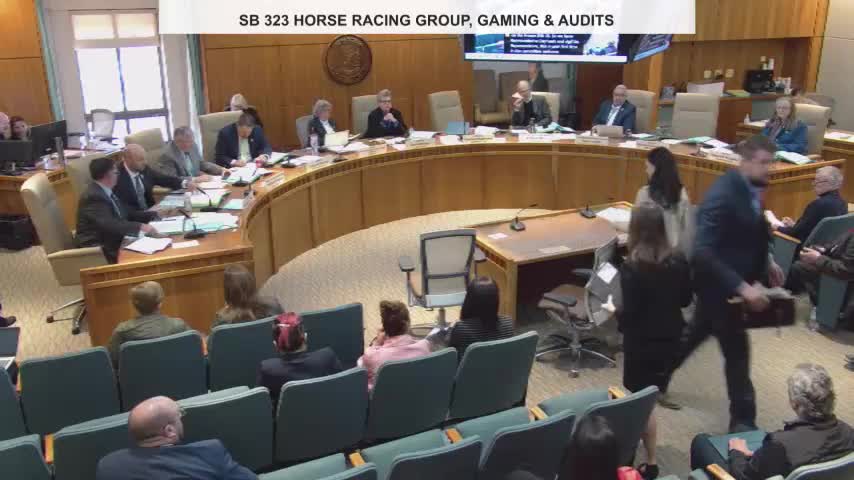Committee backs measure letting qualified optometrists perform certain in-office laser procedures after new credentialing
March 12, 2025 | Senate, Legislative, New Mexico
This article was created by AI summarizing key points discussed. AI makes mistakes, so for full details and context, please refer to the video of the full meeting. Please report any errors so we can fix them. Report an error »

The Senate committee recommended passage of House Bill 36, a scope-of-practice measure directing the New Mexico Optometry Board to develop credentialing for optometrists to perform certain in-office laser procedures.
Sponsor Representative (name in record) and optometry witnesses said the proposed procedures — laser treatment for capsular clouding after cataract surgery and several laser interventions for glaucoma and pressure control — are outpatient, microscope-based procedures already performed by optometrists in 12 other states and by New Mexico optometrists under existing practice patterns. Proponents emphasized training in modern optometry programs, cited a record of low adverse-event reporting, and argued credentialing will expand timely access to vision-preserving care in rural areas where patients can face multi‑hour travel to Albuquerque or Santa Fe.
Nut graf: The committee heard strong, split testimony: dozens of optometrists and patients described access benefits and delays in current care; the New Mexico Academy of Ophthalmology, the New Mexico Medical Society and several physician groups opposed the bill, saying the eye is delicate, some procedures carry risk, and current ophthalmology practices can schedule the procedures within weeks. Opponents asked for explicit training, credentialing and adverse-event reporting requirements in statute, and objected to expanding surgical privileges outside of physician training pathways.
Key points from testimony
- Proponents: Optometrists noted that they already perform more-complex in-office procedures and that patients in rural communities face long trips and wait times; representatives said other states allow these laser privileges and that statewide malpractice rates did not spike in states with optometrist laser privileges.
- Opponents: Ophthalmologists and physician groups argued the procedures are not risk-free, urged statutory specificity for credentialing standards, minimum training hours, and mandatory reporting of adverse outcomes.
Committee action and next steps
After hearing about 20 witnesses on both sides and extended questioning, the committee voted to report HB 36 with a do-pass recommendation (recorded as unanimous in the transcript roll call). The bill now heads to the Senate floor; members and witnesses said details of credentialing will be set by the Optometry Board rules, and several senators requested clear rule-making standards and reporting requirements in follow-up work.
Ending: Supporters said the change will reduce patient travel and speed treatment for conditions that can threaten vision; opponents said patient safety requires strict training and oversight. The bill advances with direction for focused credentialing and oversight work by the board.
Sponsor Representative (name in record) and optometry witnesses said the proposed procedures — laser treatment for capsular clouding after cataract surgery and several laser interventions for glaucoma and pressure control — are outpatient, microscope-based procedures already performed by optometrists in 12 other states and by New Mexico optometrists under existing practice patterns. Proponents emphasized training in modern optometry programs, cited a record of low adverse-event reporting, and argued credentialing will expand timely access to vision-preserving care in rural areas where patients can face multi‑hour travel to Albuquerque or Santa Fe.
Nut graf: The committee heard strong, split testimony: dozens of optometrists and patients described access benefits and delays in current care; the New Mexico Academy of Ophthalmology, the New Mexico Medical Society and several physician groups opposed the bill, saying the eye is delicate, some procedures carry risk, and current ophthalmology practices can schedule the procedures within weeks. Opponents asked for explicit training, credentialing and adverse-event reporting requirements in statute, and objected to expanding surgical privileges outside of physician training pathways.
Key points from testimony
- Proponents: Optometrists noted that they already perform more-complex in-office procedures and that patients in rural communities face long trips and wait times; representatives said other states allow these laser privileges and that statewide malpractice rates did not spike in states with optometrist laser privileges.
- Opponents: Ophthalmologists and physician groups argued the procedures are not risk-free, urged statutory specificity for credentialing standards, minimum training hours, and mandatory reporting of adverse outcomes.
Committee action and next steps
After hearing about 20 witnesses on both sides and extended questioning, the committee voted to report HB 36 with a do-pass recommendation (recorded as unanimous in the transcript roll call). The bill now heads to the Senate floor; members and witnesses said details of credentialing will be set by the Optometry Board rules, and several senators requested clear rule-making standards and reporting requirements in follow-up work.
Ending: Supporters said the change will reduce patient travel and speed treatment for conditions that can threaten vision; opponents said patient safety requires strict training and oversight. The bill advances with direction for focused credentialing and oversight work by the board.
View full meeting
This article is based on a recent meeting—watch the full video and explore the complete transcript for deeper insights into the discussion.
View full meeting
